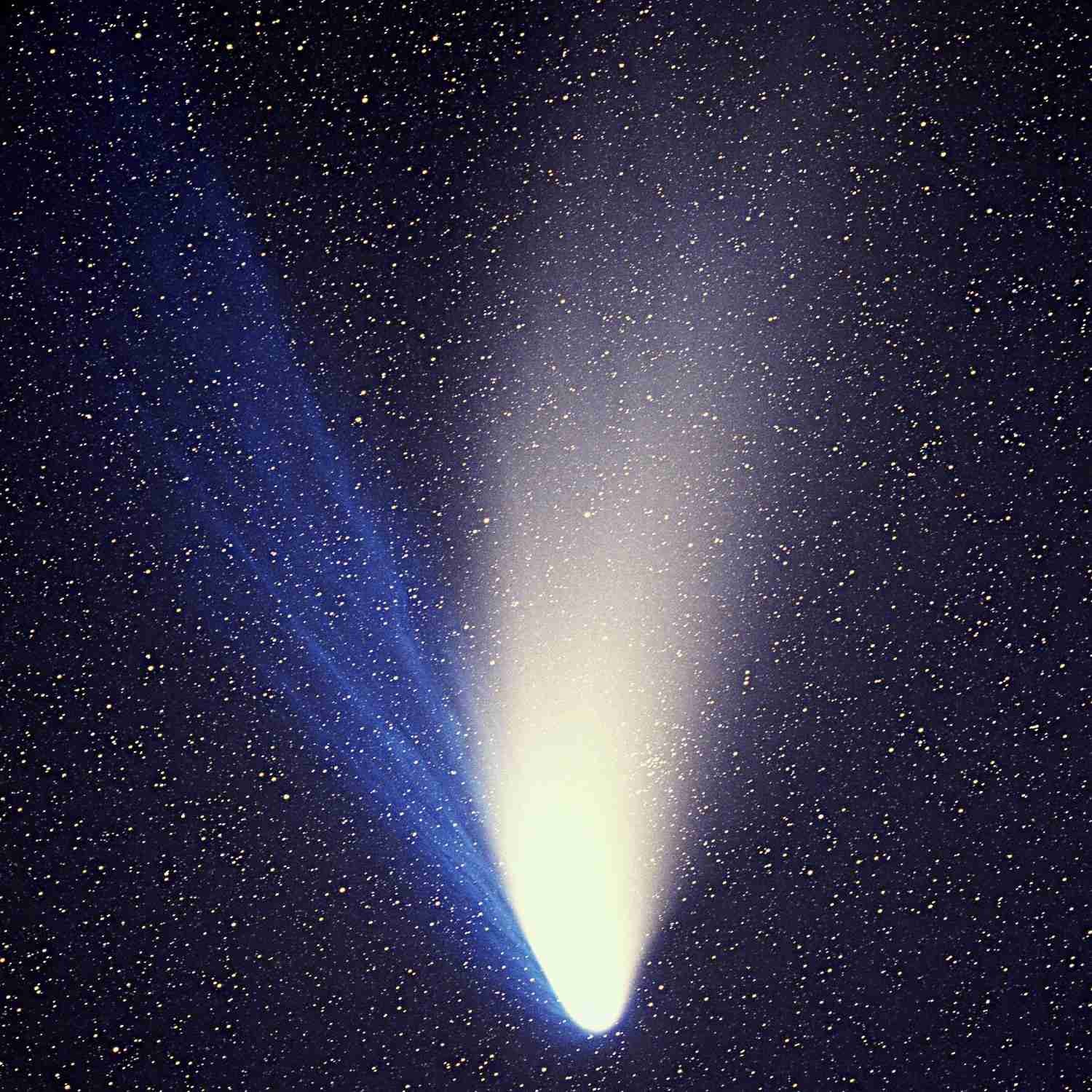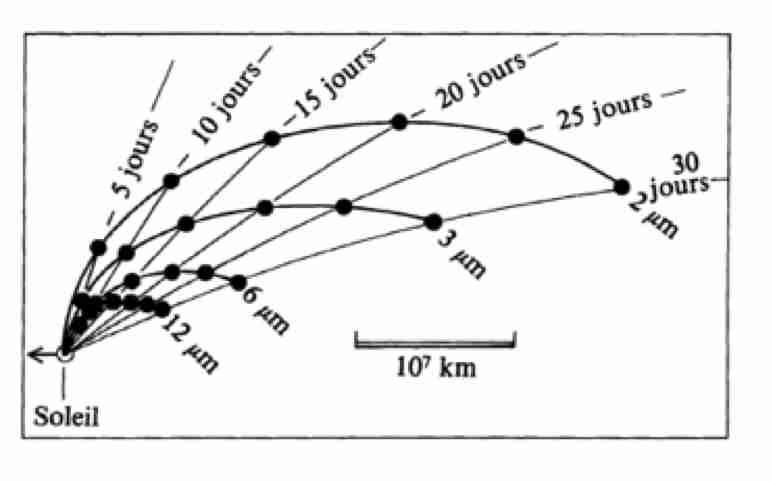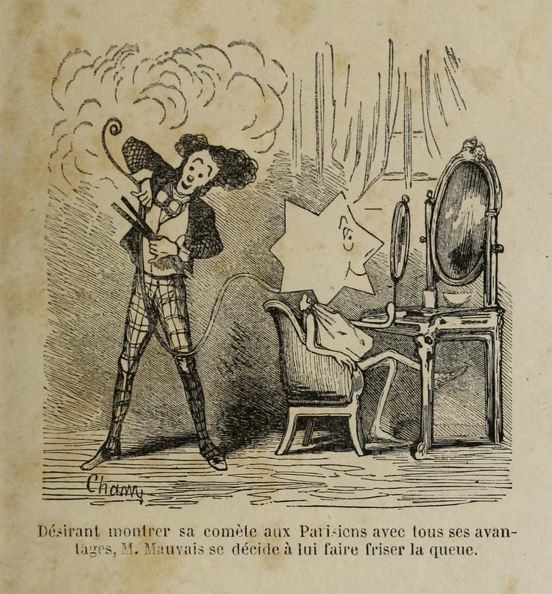The gravitational attraction of the Sun is an opposing force, which is proportional to the mass of grain, so to its volume and to the cube of its dimensions. This attraction dominates for large grains, which follow the same trajectory as the comet but gradually disperse along its orbit: it is these grains that produce the shooting stars when the Earth crosses the orbit of a comet. In contrast, the radiation pressure is dominant for the small grains, which are accelerated in a straight line towards the outside of the solar system, forming the tail. But during their motion the comet moves in its orbit, so that the tail bends as shown in the figure. However, the tail may seem straight when the terrestrial observer is near the plane of the orbit of the comet.
The formation mechanism of the gas tail is completely different. Its spectroscopic analysis shows that this gas contains molecules ionized by the ultraviolet radiation from the Sun, thus losing an electron. It includes in particular the molecular ions CO+ CO2+, CH+, OH+, H2O+ and N2+. The German astronomer Ludwig Biermann (1907-1986) showed in 1951 that these ions are driven by the wind that is continuously emitted by the Sun at a speed of around 400 km/s. As the comet moves at a much lower speed than the wind, the curvature of the tail of ionized gas is very small. Unlike the rest of the comet, the gas tail emits light itself: The molecular ions are excited by the solar radiation and emit light by de-excitation. This is what is called fluorescence. As the solar wind is greatly disturbed by the activity of the Sun, the gas tail can take different aspects, often complex.

La comète C/1995 O1. Remarquer la queue de poussières brillante et courbée, et la queue de gaz bleue et presque rectiligne.
Crédit : E. Kolmhofer, H. Raab; Johannes-Kepler-Observatory, Linz, Austria

Formation de la queue d’une comète. La trajectoire de grains de poussière de différentes tailles (2 à 12 micromètres) est représentée dans le référentiel de la comète, qui se déplace vers la gauche selon la flèche. La direction du Soleil est vers le bas de la figure. Les grains partent du noyau à l’opposé du Soleil avec une vitesse très faible et sont accélérées par la pression de radiation de la lumière solaire, à laquelle s’oppose l’attraction gravitationnelle du Soleil ; les petites particules sont plus accélérées que les grosses, comme le montre leur trajectoire. Le déplacement de la comète fait que les particules restent en arrière, ce qui infléchit la queue. Les lignes courbes en traits gras indiquent la trajectoire des grains, et les lignes radiales montrent la forme d’une queue qui serait produite par une éjection unique à un instant donné, en fonction du temps écoulé depuis cette éjection. Les queues réelles sont plus complexes car l’éjection varie au cours du temps. Remarquer, à partir de l’échelle indiquée, de 10 millions de kilomètres, l’énorme taille de la queue.
Crédit : James Lequeux, d'après Delsemme

La comète Hale-Bopp photographiée dans la nuit du 10 au 11 avril 1997 par Daniel Crussaire.
Crédit : Daniel Crussaire / Observatoire de Paris